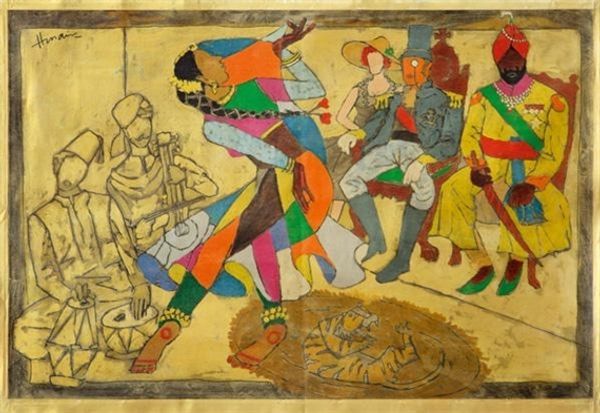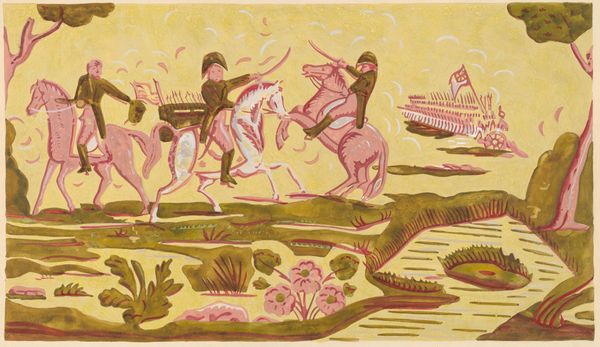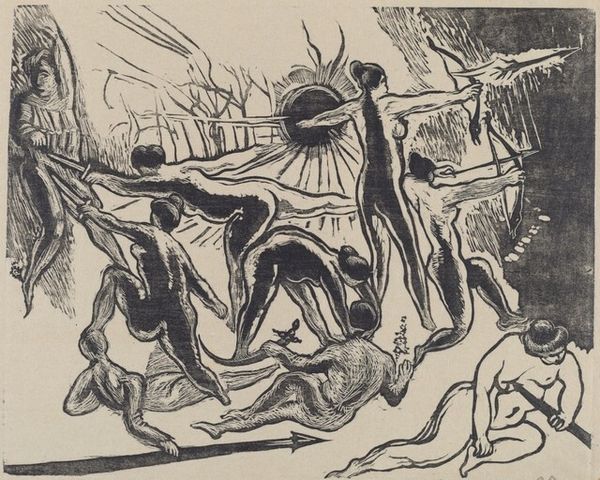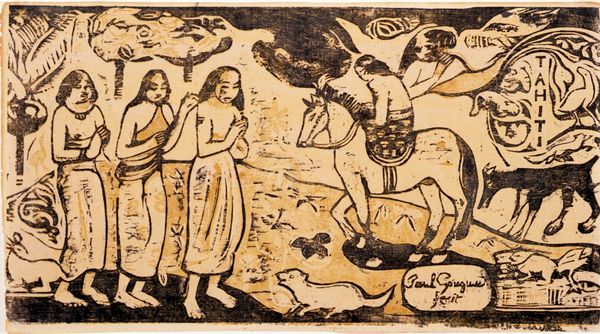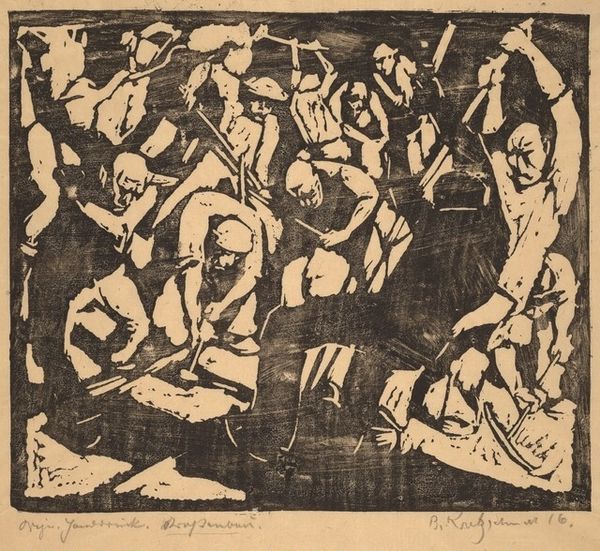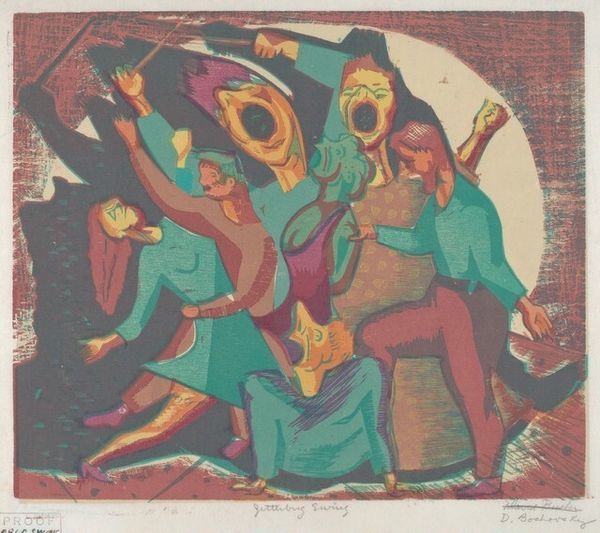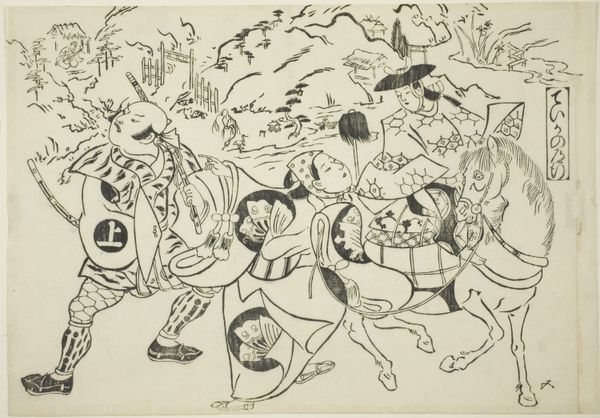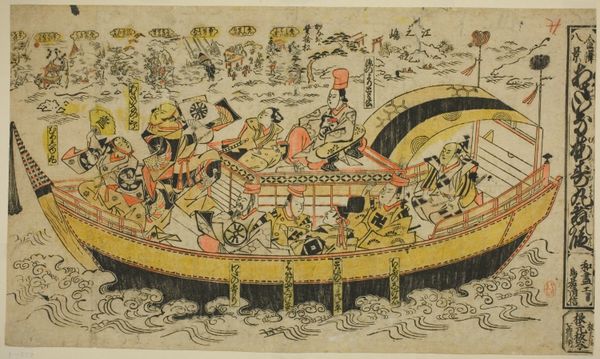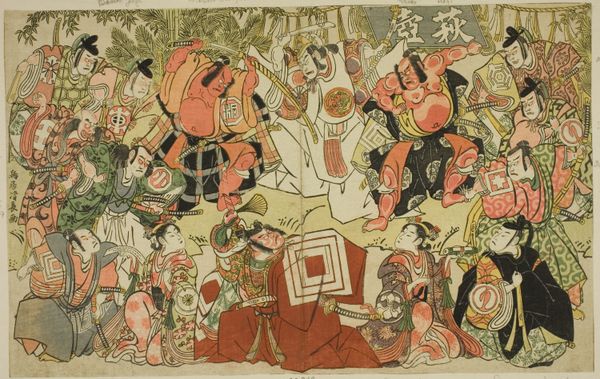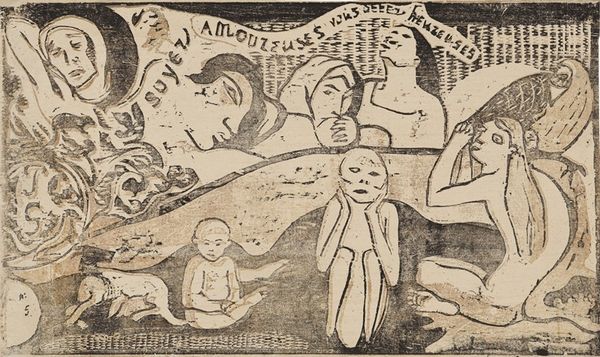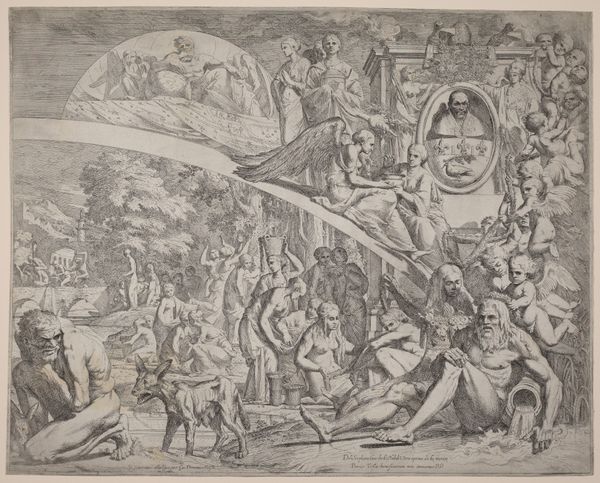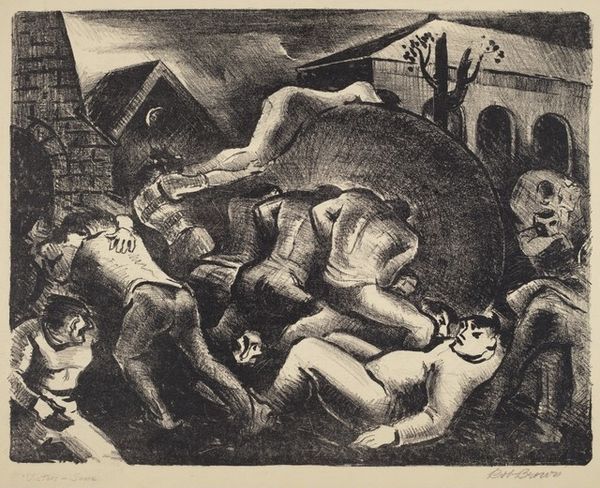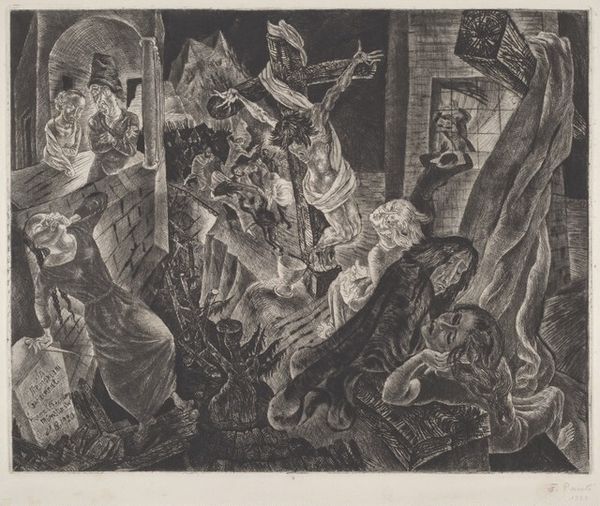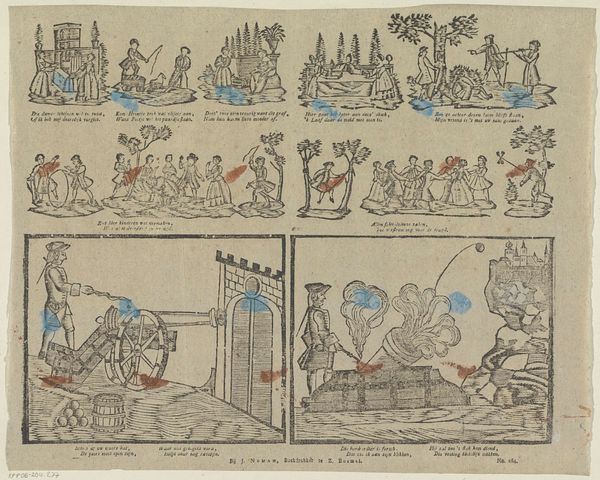
print, woodcut
# print
#
figuration
#
social-realism
#
mural art
#
woodcut
#
naive art
#
cityscape
#
genre-painting
#
regionalism
Dimensions: image: 356 x 457 mm paper: 457 x 584 mm
Copyright: National Gallery of Art: CC0 1.0
Curator: Let's spend a moment with Hulda D. Robbins's "Winter in the City," a woodcut print created in 1940. What strikes you immediately about this depiction? Editor: The scene seems almost chaotic, a real hub of activity amidst the stark cold of winter. There's a palpable energy in the shoveling and snow-balling – quite visceral, in a way. Curator: The image certainly encapsulates a particular lived experience. Consider the social context: the era of the Great Depression, the New Deal programs. This woodcut could be read as a commentary on labor, leisure, and perhaps even communal resilience. The artist uses figures almost as symbols within the wider setting of the urban environment. Editor: Absolutely. The roughhewn nature of the woodcut as a printmaking medium speaks directly to that ethos, doesn't it? It feels very much "of the people", mirroring their grit and hard work. We have a clear process here with the labor to produce the print relating to the laborers that it portrays. Curator: Precisely. It prompts questions about whose stories are being told and by whom. What perspectives are centered in this bustling depiction of a winter cityscape, and what perspectives are obscured? Does Robbins offer a critique, a celebration, or a complex mix of both? Editor: I agree. Looking closer, the printmaking itself informs how we should view it. I notice the stark contrast in tone. See the relatively straightforward method in applying layers of ink on the block to give life to a social environment where work is being produced but enjoyment is found, too? The material process emphasizes the immediate context of people meeting their daily needs. Curator: I think it highlights the importance of examining such pieces within broader narratives of identity, labor, and social class. It asks us to unpack assumptions embedded within visual culture. It definitely invites the contemporary viewer to question not only what they see but how the artwork invites them to reflect on existing power structures and social hierarchies. Editor: Right. It serves as a valuable point of departure. Looking at its formal attributes gives one level of analysis, and using that, combined with contextual understanding, yields something quite powerful. Curator: I agree; together we create richer, more inclusive, more profound conversations about art and the world. Editor: Indeed. It's crucial that we acknowledge the interplay between materials, making, and how an artwork reflects social realities.
Comments
No comments
Be the first to comment and join the conversation on the ultimate creative platform.
